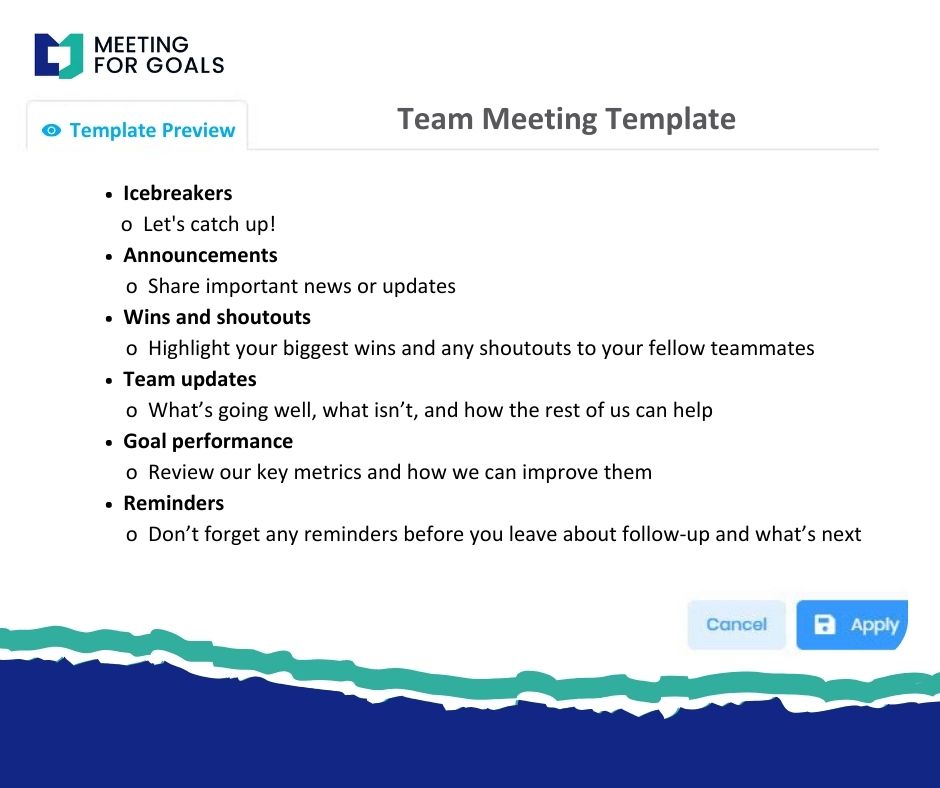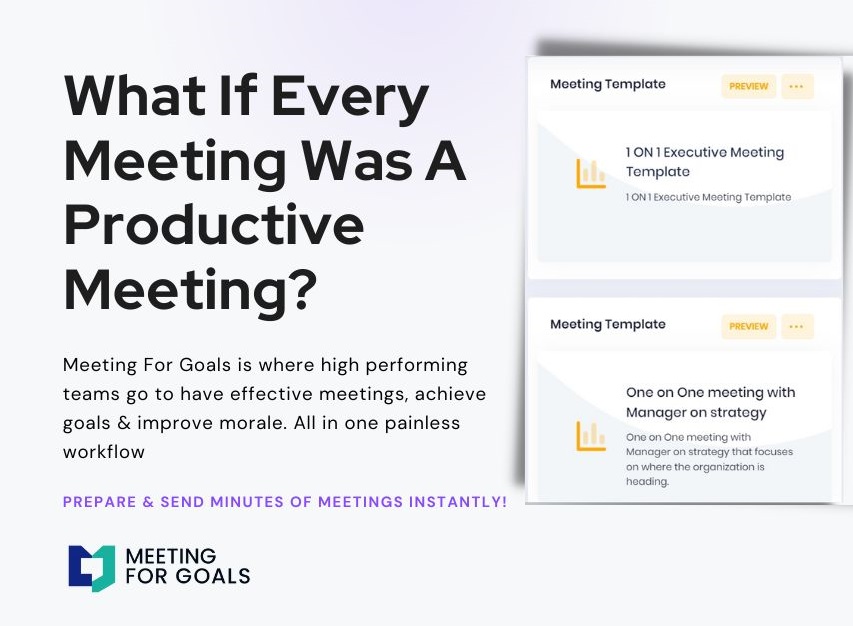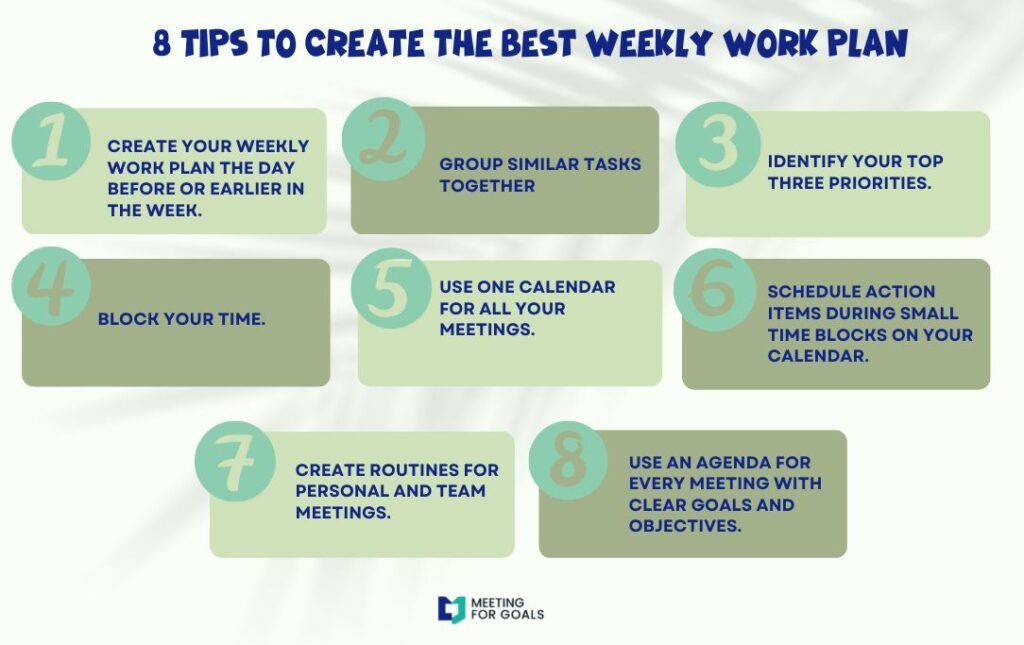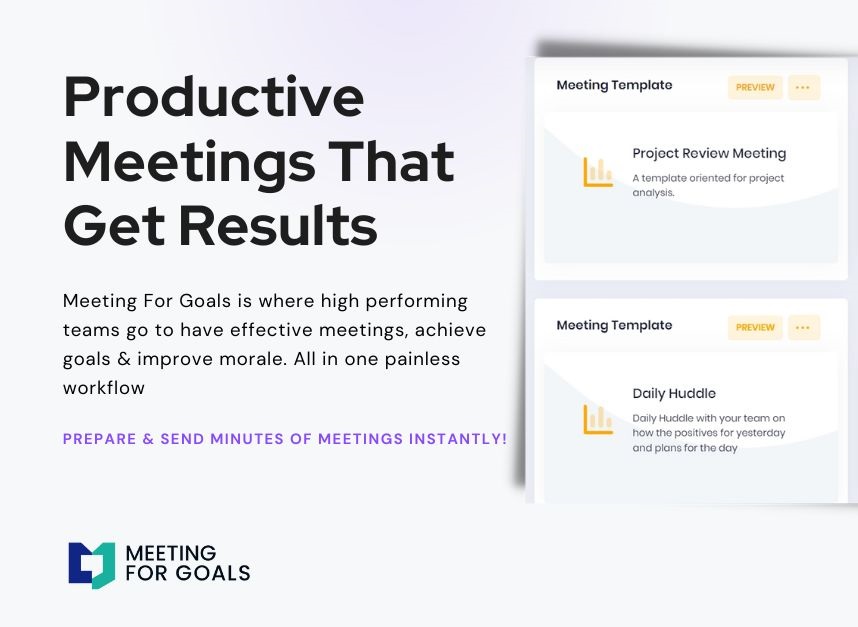Meeting Minutes: The Secret to Productive Meetings and High-Performing Teams
In today’s fast-paced business world, **time** is your most valuable asset—especially in **meetings**. Yet, many teams still struggle with unproductive, unfocused discussions that lead nowhere. The good news? There’s a simple, powerful solution: **effective meeting minutes**. Whether you’re a VP overseeing multiple departments or a director managing cross-functional teams, mastering meeting minutes can transform your team’s productivity and accountability.
This guide breaks down everything you need to know—from the **purpose** of meeting minutes to **best practices**, **tools**, and how they can drive performance. Plus, we’ll show you how Meeting For Goals helps turn ordinary meetings into **strategic wins**.
Ready to make your meetings matter?
- Start by signing up for Meeting For Goals here: https://app.meetingforgoals.com/TenantRegistration/Register
- Explore our free meeting templates to get started quickly: https://meetingforgoals.com/meeting_templates
Let’s dive in.
I. Introduction
Meetings are essential for collaboration, especially in companies with **40 to 70 employees** where cross-functional teams must stay aligned. But without structure and follow-up, meetings often become time-wasters. That’s where **meeting minutes** come in.
Meeting minutes aren’t just a recap—they’re a strategic tool. They document decisions, assign responsibilities, and ensure follow-through. For leaders and executives, effective minutes are key to turning discussions into action.
At Meeting For Goals, we understand the challenges growing companies face. Our platform helps teams stay focused, align with company goals, and follow up—without the hassle.
This guide covers the purpose of **meeting minutes**, how to write them well, tools to streamline the process, and how they enhance accountability. Whether you want to cut down meeting times, boost morale, or drive results, this is your roadmap.
Let’s get started.
2 Minute Video
Watch a 2-minute demo of our meeting management software in action.
II. The Purpose of Meeting Minutes
What Are Meeting Minutes?
Meeting minutes are written summaries of what happened in a meeting. They capture key points like the agenda, decisions made, action items, and deadlines. These are typically shared with attendees shortly after the meeting.
For teams working remotely or across departments, minutes serve as a **single source of truth**. Everyone stays aligned, and there’s less confusion or need for follow-up emails.
Why Are They Important?
- Documentation of Decisions: Minutes provide a record of what was agreed upon. This is critical for tracking long-term decisions or when multiple departments are involved.
- Accountability and Responsibility: By clearly stating who’s responsible for what, minutes help ensure tasks get done. This is especially important for executives managing multiple teams.
- Reference and Transparency: When questions come up later, minutes serve as a reliable reference. They also make decision-making more transparent.
- Legal and Compliance: In industries like finance or healthcare, keeping accurate minutes isn’t just smart—it’s required by law.
- Improved Efficiency: Knowing that meeting outcomes will be documented keeps participants focused and engaged.
Meeting Minutes as a Strategic Tool
High-performing teams don’t treat minutes as a formality. They use them to bridge the gap between talk and action.
At Meeting For Goals, we help teams turn meeting minutes into dynamic action plans. Our platform links outcomes to company goals, making it easy to track progress and drive results.
Want to see how it works? Visit https://meetingforgoals.com to learn more.
Adding an Agenda
How to add an agenda instantly on Meeting For Goals.
III. Best Practices for Writing Meeting Minutes
Writing great meeting minutes isn’t rocket science—but it does take a little structure and consistency. Here’s how to do it right.
- Use a Consistent Format: A standardized format helps everyone find what they need quickly. Include:
- Meeting title and date
- Attendees and absentees
- Agenda items
- Key discussion points
- Decisions made
- Action items with owners and deadlines
- Next meeting date (if applicable)
- Focus on Key Points: Minutes aren’t transcripts. Don’t write everything word-for-word. Instead:
- Summarize discussions briefly
- Clearly state decisions (what, why, and who)
- List action items with names and due dates
- Be Clear and Concise: Avoid jargon and long sentences. Use bullet points and short paragraphs for easy reading. Clear writing means fewer misunderstandings.
- Distribute Minutes Promptly: Share minutes within 24 hours of the meeting. The sooner they’re shared, the more effective they are. Delays can lead to confusion or missed tasks.
- Review and Revise: Before sending, check for accuracy. Make sure all action items are assigned and deadlines are realistic. If possible, ask the meeting leader to review the draft.
- Store and Track: Keep minutes in a central, searchable place. This makes it easy to look back at past meetings and follow up on outstanding tasks.
Meeting For Goals offers a searchable archive so nothing falls through the cracks.
IV. Tools for Effective Meeting Minutes
Using the right tools can save time and improve accuracy. Technology helps you capture, organize, and follow up on meeting outcomes more efficiently.
Digital vs. Traditional Methods:
Old-school methods like handwritten notes or Word docs are easy to lose and hard to share. They also don’t integrate with calendars or task managers.
Digital tools offer:
- Real-time collaboration
- Templates for consistency
- Integration with tasks and calendars
- Searchable archives
- Automated reminders
Top Tools for Meeting Minutes:
Some popular tools include:
- Google Docs or OneNote for collaborative notes
- Asana or Trello for task tracking
- Zoom or Microsoft Teams for recordings and transcripts
However, these tools often work in silos, requiring manual effort to connect the dots.
Why Choose Meeting For Goals?
Meeting For Goals is built for teams that want to streamline the entire meeting process. Our platform offers:
- Structured agendas and templates
- Real-time note-taking
- Automatic task assignments
- Integration with company goals and OKRs
- Centralized storage
- Notifications and follow-ups
You can manage the entire meeting lifecycle—from planning to follow-through—in one place.
V. Enhancing Accountability with Meeting Minutes
One of the biggest benefits of meeting minutes? **Accountability**.
When tasks and deadlines are clearly documented, it’s easier for everyone to make sure things actually get done.
The Link Between Minutes and Accountability
Accountability starts with clarity. When people leave a meeting knowing exactly what they need to do, when it’s due, and why it matters—they’re more likely to follow through.
Meeting minutes provide:
- A written record of commitments
- Clear task ownership
- Deadlines for deliverables
- A basis for follow-up
This helps avoid the dreaded “I thought someone else was doing that” scenario.
Real-World Example:
Take a mid-sized tech company’s marketing team. Before using structured minutes, campaign deadlines were often missed. After switching to Meeting For Goals, every meeting ended with a clear list of action items, owners, and due dates.
The result? On-time project completion jumped by **30%** in just one month. Team morale also improved because everyone knew their role.
Executive Oversight:
For executives, meeting minutes offer a high-level view of what’s happening across teams. You can quickly see:
- Which goals are being addressed
- Who’s responsible for what
- Where bottlenecks are forming
Meeting For Goals includes dashboards that track action item completion across departments, so you never miss a beat.
Building a Culture of Accountability:
When meeting minutes are used consistently, they help create a culture of ownership. Team members come prepared, knowing their input will be documented and followed up on.
This builds trust, reduces confusion, and drives performance.
Want to build that culture in your organization? Visit https://meetingforgoals.com to learn how.
VI. Conclusion
Meeting minutes are more than just notes—they’re powerful tools that can transform the way your team works. Especially in companies with **40 to 70 employees**, where alignment is key, mastering meeting minutes is a game-changer.
Here’s what great meeting minutes can do:
- Document decisions clearly
- Assign responsibilities with deadlines
- Improve team communication
- Drive accountability and follow-through
- Align meetings with company goals
At Meeting For Goals, we make that process easy. Our all-in-one software helps you plan meetings, take notes, assign tasks, and track progress—all in one place.
Ready to make your meetings more productive and strategic?
- 👉 Sign up for Meeting For Goals today: https://app.meetingforgoals.com/TenantRegistration/Register
- 👉 Grab our free meeting templates here: https://meetingforgoals.com/meeting_templates
- 👉 Learn more about how we can help: https://meetingforgoals.com
Still curious about how meeting minutes can impact your team? Check out this insightful article from Harvard Business Review on how to run meetings that are actually useful: https://hbr.org/2016/03/what-everyone-should-know-about-running-productive-meetings
And for a deeper dive into accountability in the workplace, this Forbes article offers excellent insights: https://www.forbes.com/sites/brentgleeson/2020/01/26/5-powerful-ways-leaders-practice-accountability/?sh=3e4e5a7b3d7c
Start transforming your meetings today—because every minute counts.




